EVENTS CONVENT HIGH SCHOOL
03/02/2022 CLASS- 11 SESSION 2021-22
SUBJECT : ENGLISH HORNBILL
CHAPTER-7
______________________________________
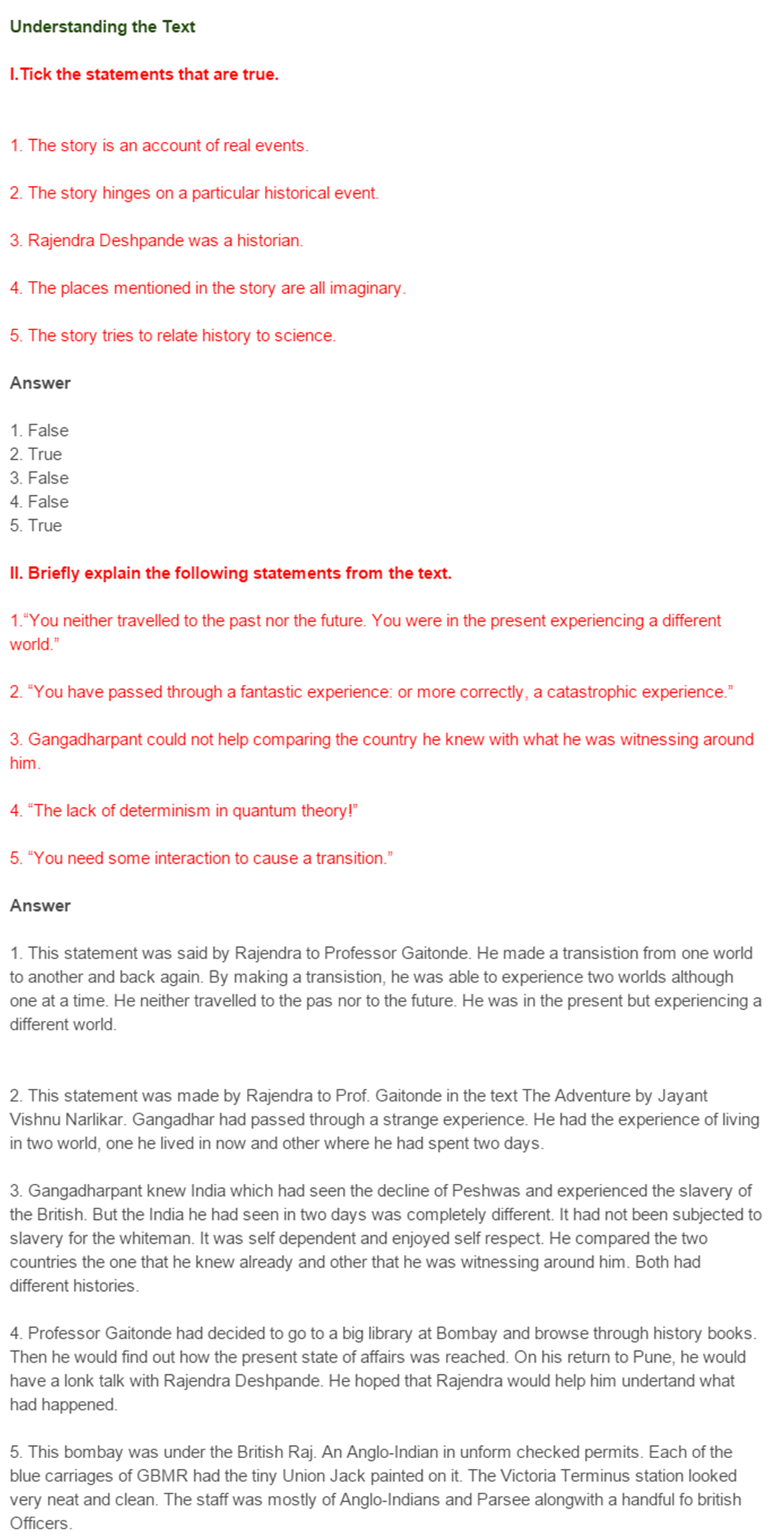 |
EVENTS CONVENT HIGH SCHOOL
 |
EVENTS CONVENT HIGH SCHOOL
Question 1.The phenomenon of motion was placed on a sound scientific footing by two scientists. Write their names.
Answer:
Galileo Galilei and Isaac Newton.
Question 2.Are rest and motion absolute or relative terms?
Answer:
They are relative terms.
Question 3.Suppose a ball is thrown vertically upwards from a position P above the ground. It rises to the highest point Q and returns to the same point P. What is the net displacement and distance travelled by the ball?
Answer:
Displacement is zero. Distance is twice the distance between position P and Q.
Question 4.Which speed is greater: 30 m/s or 30 km/h?
Answer:
30 m/s
Question 5.What do you mean by 2 m/s2?
Answer:
The velocity of the body increases by 2 m/s after every second.
Question 6.Can uniform linear motion be accelerated?
Answer:
No
Question 7.Define one radian.
Answer:
It is the angle which is subtended at the centre by an arc having a length equal to the radius of the circle.
Question 8.What is the relation between linear velocity and angular velocity?
Answer:
Linear velocity = Angular velocity × Radius of circular path.
Question 1.Distinguish between speed and velocity.
Answer:
Speed:
Velocity:
Question 2.Distinguish between distance and displacement.
Answer:
Distance
Displacement:
Question 3.Write down the SI unit of the following quantities:
(a) Displacement
(b) Speed
(c) Velocity
(d) Acceleration
Answer:
(a) m
(b) m/s
(c) m/s
(d) m/s2
Question 1.Define the following terms:
(a) Distance
(b) Displacement
(c) Speed
(d) Velocity
(e) Acceleration
(f) Uniform motion
(g) Uniform circular motion
(h) Scalar quantity
(i) Vector quantity
Answer:
(a) Distance: The total path length traveled by a body in a given interval of time is called distance.
(b) Displacement: The shortest distance measured from the initial to the final position of an object is known as displacement.
(c) Speed: The speed of a body is defined as the distance traveled per unit time.
(d) Velocity: Velocity is defined as displacement per unit time.
(e) Acceleration: The rate of change of velocity with respect to time.
(f) Uniform motion: A body moving in a straight line has a uniform motion if it travels the equal distance in equal intervals of tune.
(g) Non-uniform motion: A body has a non-uniform motion if it travels unequal distances in equal intervals of time.
(h) Scalar quantity: A physical quantity which is described completely by its magnitude only, is called a scalar quantity.
(i) Vector quantity: A physical quantity that has magnitude as well as direction and obeys the vector addition is called a vector quantity.
Question 2.Draw a position-time graph of for
(a) rest
(b) uniform motion
(c) Non-uniform motion
Answer:
(a) Position – time graph for rest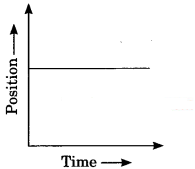
(b) Position – time graph for uniform motion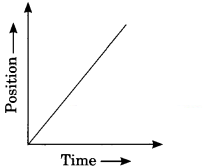
(c) Position – time graph for non-uniform motion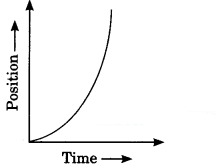
EVENTS CONVENT HIGH SCHOOL
1.Fill in the blanks:
(a) The presence of specific features which enables a plant or an animal to live in a particular habitat is called adaptation.
(b) The habitats of the plants and animals that live on land are called terrestrial habitats.
(c)The habitats of plants and animals that live in water are called aquatic habitats.
(d) Soil, water and air are the abiotic factors of a habitats.
(e) Changes in our surroundings that make us respond to them are called stimuli.
VERY SHORT ANSWER TYPE QUESTIONS
1. Name some plants found on mountains.
Ans: Oaks, Pinus and Deodars.
2. What is habitat?
Ans:. The place where organisms live and which provide food and safety for them is ‘called habitat.
3. Name a few habitats.
Ans: Forests, grassland, mountains, ponds and oceans etc.
4. Name two organisms that live in deserts.
Ans: Cactus, camel, desert rat.
5. Name a few plants that live in ponds.
Ans: Hydrilla, lotus, hyacinth etc.
6. Name the habitat where various types of fish live.
Ans: Pond, river, sea.
7. Name a common thing in all fishes.
Ans: Gills, streamlined body, fins, tail.
8. What is the function of gill?
Ans: Gills help the fish to absorb oxygen dissolved in water.
SHORT ANSWER TYPE QUESTIONS
1. What are the differences in the desert and sea regions?
Ans: In the sea, plants and animals are surrounded by salty water. Most of them use the air dissolved in water for breathing. In desert, a very little amount of water is available. It is very hot in the day time and very cold at night. The organisms breathe air from the surroundings.
2. What do you mean by term adaptation?
Ans: The presence of specific features or certain habits which enable a plant or an animal to live in its surroundings is called adaptation.
3. Explain the features offish which help it to adapt to live in water.
Ans:
(i) The shape of the fish is streamlined which help in the movement.
(ii) The slippery scales/skin on their bodies to protect them.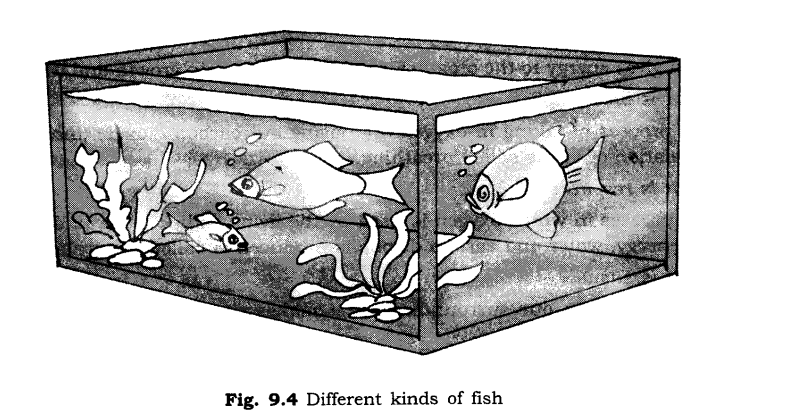
(iii) They have flat fins and tails which help them to swim, change direction and to keep the body balanced.
(iv) They have gills which help in breathing in water.